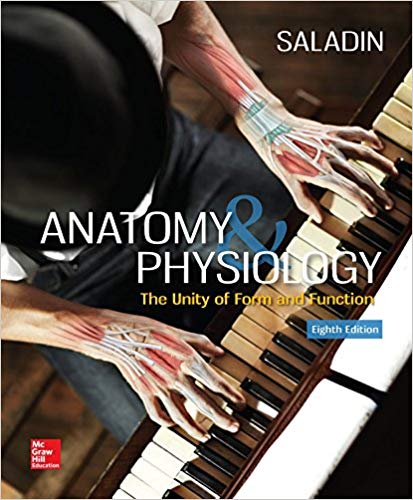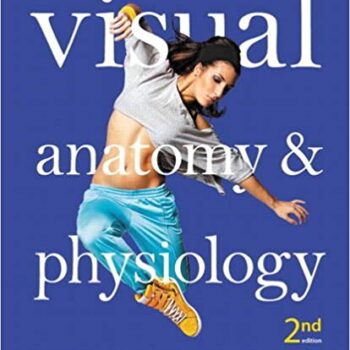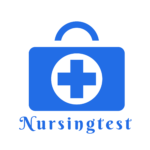
Test Bank for Anatomy & Physiology The Unity of Form and Function 8th Edition by Saladin, Kenneth S
Original price was: $55.00.$22.00Current price is: $22.00.
Digital item No Waiting Time Instant DownloadISBN-13: 978-1259277726 ISBN-10: 1259277720
The Test Bank for Anatomy & Physiology: The Unity of Form and Function, 8th Edition by Kenneth S. Saladin is a good resource for learners as well as educators. It integrates well with the text and assists in the learning process through the provision of multiple-choice, true-false, matching, and short-answer questions based on the important themes in the book.
Why Use This Test Bank?
The use of this test bank is quite beneficial for both the learners and the reviewers in the sense that it clarifies revision questions about certain areas. The critical areas for example include the nervous system, muscular system, circulatory system, and several other crucial areas making it a system that covers an entire body which one is trying to cover more. This is beneficial in aiding in understanding and preparing one for the examination confident enough.
Benefits of This Test Bank
Time-Saving and Better Exposure to Concepts: The test bank is embedded with numerous questions that are arranged and closely based on the content of the textbook therefore can be helpful for extensive revision and self-testing increasing comprehension of difficult subjects in Anatomy and Physiology.
- Comprehensive Concept Review: The test bank assists in explaining and strengthening some active concepts like cell, tissue types chart, function, homeostasis, and biological systems.
- Self-Assessment: Students can gauge their understanding of subjects such as respiratory anatomy, endocrine function, and muscle physiology by practicing this test bank more often.
- Enhanced Learning Outcomes: This resource enhances the learning outcomes by paying attention to important concepts and applied learning presented in Saladin’s 8th edition.
Key Features
- Alignment with Textbook Content: All The questions provided are based on The Unity of Form And Function book chapter objectives and goals.
- Wide Range of Topics: It comprises all essential body systems such as the integumentary system, skeletal system, cardiovascular system, and digestive system, which are important in the study of human physiology.
- Practice for Real Exam Scenarios: The Test bank prepares you for real examination situations to help you deal with time factors and get to know the commonly used patterns of questions in examinations.
How This Test Bank Supports Your Studies
Using this test bank facilitates the understanding of anatomy and physiology through the use of specific questions directed toward understanding physiological conceptualization and bodily systems. It’s a good way to jocking you for exams, quizzes, and practical tests especially if it’s in the wigs of nervous control integrations or hormone balancing.
Summary
Kenneth S. Saladin’s Anatomy & Physiology: The Unity of Form and Function, 8th Edn. is copyright 2015. In addition, it features powerful images that provide a clear representation of questions, enabling students to tighten their grasp on several concepts present in the human anatomy and physiology course. This test bank has been designed in such a manner that the reader will find it interesting to study and will seldom feel stressed as the reader will only concentrate on the main elements of each chapter.
Test Bank for Anatomy & Physiology The Unity of Form and Function 8th Edition by Saladin, Kenneth S
Chapter 02 The Chemistry of Life Answer Key
True / False Questions
|
1. |
Minerals are organic elements extracted from the soil by plants. FALSE |
|
Accessibility: Keyboard NavigationBlooms Level: 1. RememberGradable: automaticHAPS Objective: O01.01e List the important dietary minerals and describe the major uses of each mineral in the body.HAPS Topic: Module O01 Nutrition.Learning Outcome: 02.01c State the functions of minerals in the body.Section: 02.01Topic: Atoms and molecules |
|
2. |
Molecules composed of two or more atoms are called compounds. FALSE |
|
Accessibility: Keyboard NavigationBlooms Level: 3. ApplyGradable: automaticHAPS Objective: C01.03 Compare and contrast the terms atoms, molecules, elements, and compounds.HAPS Topic: Module C01 Atoms and Molecules.Learning Outcome: 02.01b Distinguish between elements and compounds.Section: 02.01Topic: Atoms and molecules |
|
3. |
Hydrogen, deuterium, and tritium are three isotopes of hydrogen. TRUE |
|
Accessibility: Keyboard NavigationBlooms Level: 1. RememberGradable: automaticHAPS Objective: C01.01c Explain how ions and isotopes are produced by changing the relative number of specific subatomic particles concerning the structure of an atom.HAPS Topic: Module C01 Atoms and Molecules.Learning Outcome: 02.01d Explain the basis for radioactivity and the types and hazards of ionizing radiation.Section: 02.01Topic: Atoms and molecules |
|
4. |
Potassium, sodium, and chlorine are trace elements. FALSE |
|
Accessibility: Keyboard NavigationBlooms Level: 1. RememberGradable: automaticHAPS Objective: C01.03 Compare and contrast the terms atoms, molecules, elements, and compounds.HAPS Topic: Module C01 Atoms and Molecules.Learning Outcome: 02.01b Distinguish between elements and compounds.Section: 02.01Topic: Atoms and molecules |
|
5. |
Ionic bonds break apart in water more easily than covalent bonds do. TRUE |
|
Accessibility: Keyboard NavigationBlooms Level: 2. UnderstandGradable: automaticHAPS Objective: C02.01a List each type of bond in order by relative strength concerning non-polar covalent, polar covalent, ionic, and hydrogen bonds.HAPS Topic: Module C02 Chemical bonding.Learning Outcome: 02.01f Define the types of chemical bonds.Section: 02.01Topic: Chemical bonding |
|
6. |
A solution is a mixture of two or more substances that are physically blended but not chemically combined. TRUE |
|
Accessibility: Keyboard NavigationBlooms Level: 2. UnderstandGradable: automaticHAPS Objective: C03.02 Distinguish among the terms solution, solute, solvent, colloid suspension, and emulsion.HAPS Topic: Module C03 Inorganic compounds and solutions.Learning Outcome: 02.02c Show how three kinds of mixtures differ from each other.Section: 02.02Topic: Inorganic compounds and solutions |
|
7. |
The pH of blood plasma is approximately 7.4, which is slightly acidic. FALSE |
|
Accessibility: Keyboard NavigationBlooms Level: 1. RememberGradable: automaticHAPS Objective: C03.05 State acidic, neutral, and alkaline pH values.HAPS Topic: Module C03 Inorganic compounds and solutions.Learning Outcome: 02.02d Define acid and base and interpret the pH scale.Section: 02.02Topic: Inorganic compounds and solutions |
|
8. |
The high heat capacity of water makes it a very ineffective coolant. FALSE |
|
Accessibility: Keyboard NavigationBlooms Level: 2. UnderstandGradable: automaticHAPS Objective: C03.01 Discuss the physiologically important properties of water.HAPS Topic: Module C03 Inorganic compounds and solutions.Learning Outcome: 02.02b Describe the biologically important properties of water.Section: 02.02Topic: Inorganic compounds and solutions |
|
9. |
In an exchange reaction, covalent bonds are broken and new covalent bonds are formed. TRUE |
|
Accessibility: Keyboard NavigationBlooms Level: 2. UnderstandGradable: automaticHAPS Objective: C04.03 Define and give examples of dehydration synthesis and hydrolysis reactions.HAPS Topic: Module C04 Organic compounds.Learning Outcome: 02.03c List and define the fundamental types of chemical reactions.Section: 02.03Topic: Chemical bonding |
|
10. |
Chemical reactions in which larger molecules are broken down into smaller ones are called catabolic reactions. TRUE |
|
Accessibility: Keyboard NavigationBlooms Level: 1. RememberGradable: automaticHAPS Objective: O02.01 Define metabolism, anabolism, and catabolism.HAPS Topic: Module O02 Introduction to Metabolism.Learning Outcome: 02.03e Define metabolism and its two subdivisions.Section: 02.03Topic: Atoms and molecules |






